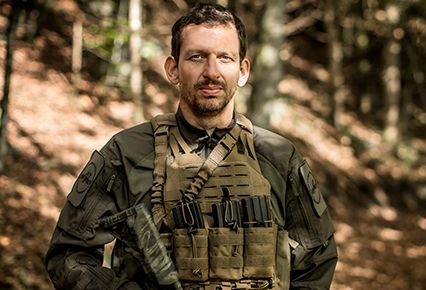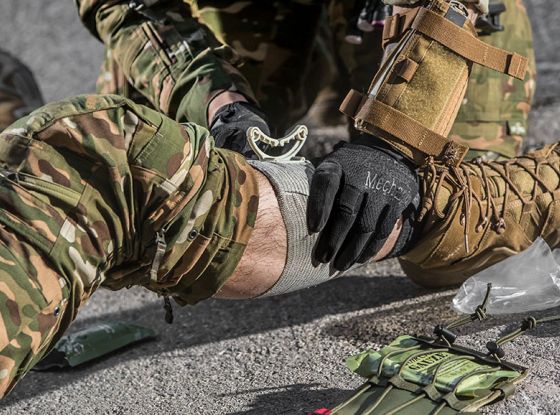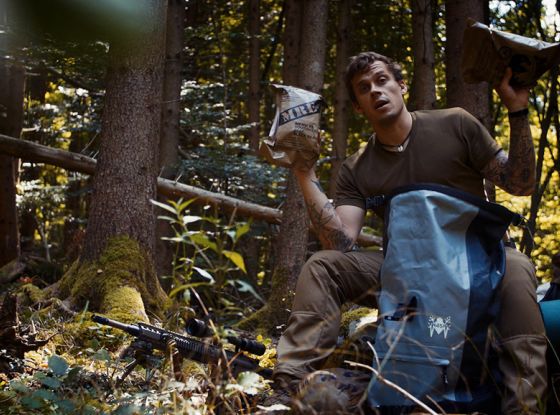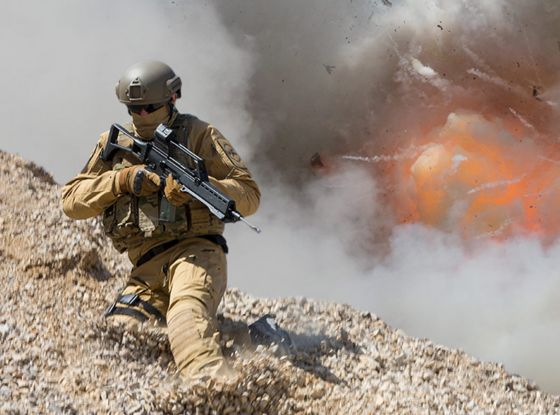Getting into tactical tracking is a challenging feat to overcome on your own. In this post, tracking instructor Boris Vos shares an easy exercise to get you started. This blog post covers the pace-to-pace tracking exercise.
In this blog post:
Introduction
Pace-to-pace tracking exercise | Time to complete: approx. 60 mins.
By Boris Vos
So, you want to learn how to track. Great!
When first learning to track, it’s important to understand one crucial point: the first exercise you're going to do has nothing to do with hunting and catching a quarry.
We first crawl, then walk, then run. This exercise has everything to do with sensitising your brain to recognise those minute changes in the terrain which indicate that a person has passed through.
![]()
The first exercise we are going to do is called a pace-to-pace tracking exercise. It's an exercise designed to teach you how to look for what’s known as “sign” and recognize it by tracking pace by pace.
In this exercise, you will learn how to set up a pace-to-pace exercise, how to identify three of the six characteristics of sign, how to position yourself in relation to the track, and how this will challenge your focus and patience. Ready?
Preparation
What do I need?
For this exercise you really don't need any special kit; just clothes suitable to the terrain and climate, some comfortable footwear, adequate hydration, and lots of patience.
When should I do this exercise?
The best time of day for this exercise is either early in the morning or late in the afternoon when the sun is at a low angle. The low light helps when learning how to track because the low sun angle brings out those fine details in the tracks.
Where should I do this exercise?
Now we need to look for an area in which to do our first exercise. You want to find an area where you can practice undisturbed so you can concentrate on the exercise itself.
Find an area that does not have a lot of human and animal traffic. The minimum size of the area you need is about 10 meters by 30 meters—but in this case, bigger is always better.
What kind of terrain do I need?
You want to find an area with no low vegetation (i.e. grass, or scrub). The best terrain for your first pace-to-pace exercise consists of a firmly compressed underlayer with a top layer of loose dirt or sand.
But make sure the sand is not too loose because the tracks will be too obvious, in which case you're not really learning anything.
A great place to look for these areas is construction sites or neglected areas within your town. A track in the woods that is not overused can also be a great place to find this type of medium.
![]()
How to set up the exercise
Great, so you found a place to do your first tracking exercise.
- Notice where the sun is coming from and position yourself so you look in the direction of the sun.
- Look immediately in front of you for a nice spot with some loose earth.
- Using your finger or a stick, draw a circle with a diameter of approximately 50 centimetres.
This is your starting point.
- Now place your right foot inside this circle.
- Look up in the direction of the sun and pick a reference point.
- You will walk in a straight line toward this reference point.
Walk naturally toward that point and, as you do, count off 20 paces. The emphasis here is on walking naturally, so don't think about it too much.
Just walk toward the reference point and after 20 paces stop and turn around. Draw another circle around the last step you took.
This is your endpoint.
![]()
The first track
Awesome! You've laid out your first pace-to-pace. Now walk back to your start point, but make sure you stay well away from the tracks that you just laid. You don’t want to confuse yourself by contaminating those tracks. Once you get back to the start point, position yourself behind the circle.
Relax and take a deep breath. Focus. Ready?
Take a knee behind the circle, look inside the circle and see if you can identify your first shoeprint.
The correct name for it is “footwear impression” but for now we’ll just call it a shoeprint. Give your eyes some time to explore the inside of the circle. Can you see the thread pattern of your shoe?
When you see the thread pattern, what your eyes and brain actually see are straight lines and geometric shapes not naturally present in the environment. Give your brain some time to recognize these geometric shapes and straight lines, and see if you can see more within the circle.
Can you see the outline of the shoe, the edge of the heel, and where the tip of your shoe was? Can you see the patterns made by the studs in your thread pattern?
![]() These straight lines and geometric shapes that make up the thread pattern of your shoe are what we in tracking call “regularity”.
These straight lines and geometric shapes that make up the thread pattern of your shoe are what we in tracking call “regularity”.
Regularity is the first characteristic of sign. It’s picked up by your brain because these are shapes that you generally don't see in nature. Once you have identified from your shoeprint all the regularity you can, stand up and see if they are still visible to you.
This is an important step. When tracking, you will be standing up or walking, so you have to train your brain to see sign from that perspective. If you're unsure, it's fine to take another knee, find regularity, and then stand up again.
Happy with regularity? Let’s see if there’s anything else we can see in this print.
The earth will be compressed where the flat parts of your shoe made contact with the surface. See if you can identify these areas. Undisturbed sand or dirt has a very irregular surface and texture.
![]()
You will get a nice flat and levelled surface where it has been compressed by your shoe. It may reflect the sun a little bit differently and seem lighter.
You may also see that some small pebbles or small sticks have been pushed into the earth. In tracking, we call this “flattening” and it is the second characteristic of sign. Flattening is the result of pressure being exerted on the surface.
We can identify it by comparing it to the undisturbed earth around our shoeprint. See how many areas of flattening you can identify.
Now repeat the previous drill, stand up, and see if you can still see the areas of flattening. If you can, great! If not, you can always take a knee again, re-identify the areas, and then stand up.
![]()
Remember what I said about patience? This is where you will need it! You’re doing great!
The last sign characteristic we will be looking for today is colour change. Undisturbed soil is exposed to the elements and will often take on a lighter colour than the soil underneath.
Once that top layer is disturbed, the soil underneath is exposed and its colour will seem a subtly darker or richer tint. Have a look inside the circle. Do you see any areas of colour change? Can you determine what part of your shoe made them?
![]()
Try to find all the areas of colour change, stand up, and see if you can still see them. You can? Awesome! Now, mark the print with a semi-circle behind the heel and a line (which indicates that it’s a right shoeprint).
![]()
You’re ready for the next step.
The next track
So we are now ready to look for the next shoeprint. When you first start with tracking, the natural texture of the ground may cause you to think you’re seeing sign, but you’re not.
So it's really important to focus on the correct area in the search for your next print. The next track is a left shoeprint.
If you walked naturally when you laid the track, the next one will be about 70 to 80 centimetres from the heel of the first print. It will also be in front of the first track and ever so slightly to the left.
![]()
This is where you search for sign. From where you are behind the last track, visually scan this area and see if you can pick up regularity, flattening, and colour change.
If you can, great! If not, no problem. Move forward, stop behind where you expect the next print to be, and repeat the process you did with the first print. Remember, your brain is still learning to recognize sign.
Important note: take extra care not to step on any of the tracks. Trackers never walk on sign.
Tracking on
We repeat this process for every single print until we reach the endpoint. Confirm if your next print is a left or right print. This helps you to search in the correct spot. If you’re unsure, look at your marking on the previous print.
If you have taken your time on the first couple of prints, you may notice that identifying the sign becomes easier. That is good news; your brain is learning how to recognise sign.
![]()
You may already see more than one print ahead of you, but resist the temptation to skip a difficult print and fast-forward to an easier one. The prints you have to hunt for are the ones that teach you the most. Don’t skip these valuable opportunities to build your tracking foundation!
You’ve nailed it once you reach your endpoint and have found every single print. Your brain is learning to recognise sign. You will never look at the ground the same way again. Grab yourself a drink, you earned it!
Outro
Hopefully, this post brought some insight to get you started on tactical tracking. When you go out there, make some pictures, tag us on Instagram (@rangerboris and @ufprogear) and let us know how you’re getting along on your first tracking exercise.
If you liked this blog post and want to learn more, let the team at UF PRO know. They know how to find me in the bush.




